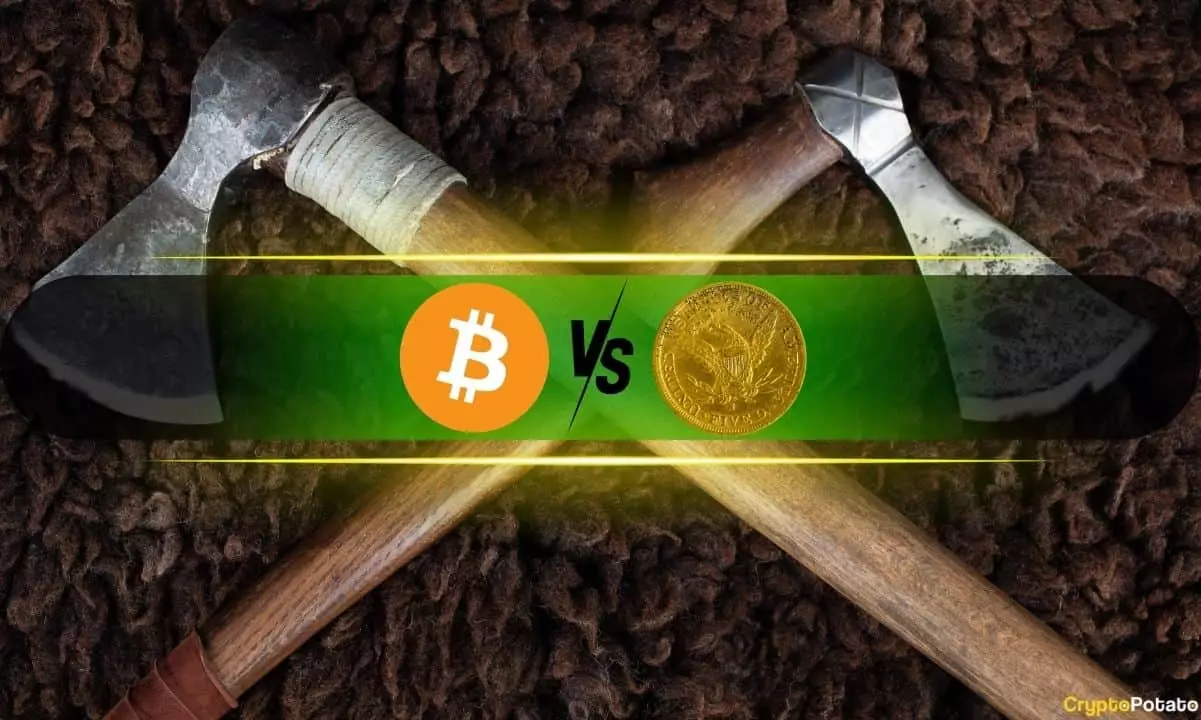In an era marked by skyrocketing traditional safe havens and equities, Bitcoin’s lackluster performance exposes a fundamental mismatch in market perceptions and investor priorities. Gold, silver, and major stock indices are all soaring, signaling a risk-on environment buoyed by cautious optimism or perhaps strategic complacency. Yet, Bitcoin—the supposed “digital gold”—remains inert, caught in a narrow band that neither confirms nor refutes the chaos swirling beneath the surface. This divergence is not just an anomaly; it is a stark reflection of underlying systemic issues within the cryptocurrency ecosystem and broader economic narratives.
Traditional safe havens are rallying to unprecedented heights, revealing traders’ ongoing fear of economic instability. Gold recently touched a fresh record of nearly $3,700, and silver surged more than 41%, underscoring their enduring appeal amid geopolitical tensions and economic uncertainties. Equities, especially the S&P 500 and NASDAQ, are trading near all-time highs, suggesting that market participants are embracing risk again, potentially underestimating looming threats. All of this points to a paradoxical environment—where investors simultaneously rush into both safe and risky assets—highlighting a complex psychological shift that defies conventional logic.
Against this backdrop, Bitcoin’s apparent indifference suggests that the narrative of cryptocurrency as a hedge may be overhyped or prematurely assumed. Its price remains confined within a narrow corridor, oscillating from approximately $114,000 to $116,500, with subtle dips and minor rallies that lack conviction. Instead of riding the wave of macroeconomic instability or broader market fears, Bitcoin seems to be immobilized, sidelined by factors emerging from its own fractured ecosystem. This stagnation tests the faith of believers who see the asset as a hedge against fiat inflation and political instability, exposing their optimism as potentially misplaced.
Internal Pressures and the Democratic Dilemma of Long-Term Holders
One of the most revealing indicators of Bitcoin’s internal crisis is the behavior of long-term holders. Recent data indicates that roughly 230,000 BTC has been sold off in just the past month—a stark sign of distrust or profit-taking that contradicts traditional narratives of crypto investors holding steadfast through volatility. This relentless sale creates a persistent overhang, making it impossible for demand to exert upward pressure sufficient to break the current stalemate. Instead of attracting fresh capital, the market witnesses capitulation at the long end of the spectrum, further stalling any meaningful rally.
This pattern underscores a crucial flaw: Bitcoin’s inability to generate sustained retail or institutional confidence in the face of macroeconomic catalysts. While macro theory suggests that widespread money printing, systemic debt crises, and geopolitical turbulence should act as tailwinds for Bitcoin’s price, the reality paints a different picture. Sellers dominate, and buyers remain cautious, possibly discouraged by internal issues such as exchange scandals, regulatory crackdowns, or lingering doubts about the asset’s long-term viability.
Technical Signals and Future Prospects: Is Hope Justified?
Despite current stagnation, some analysts highlight promising technical indicators that could herald a new rally—perhaps even a significant one that challenges recent highs. A rare “golden cross” on Bitcoin’s MACD, coupled with a bottomed MVRV near $107,000, has historically preceded substantial gains of 30% to 40%. Proponents argue this setup could be the prelude to a move towards $140,000 or beyond, especially if the pattern repeats.
Simultaneously, industry veterans like Arthur Hayes suggest that macro liquidity conditions—rather than just speculative cycles—will dictate Bitcoin’s long-term trajectory. He envisions the asset accelerating into a multi-year bull run, potentially reaching $250,000 by 2026, as fiat currencies continue to face erosion and central banks remain hesitant to tighten monetary policies decisively. However, these optimistic forecasts overlook the stark reality: until internal demand is rekindled and long-term holders relinquish their sell pressure, Bitcoin may remain caught in a sideways trap, unable to fulfill its promised role as a resilient hedge or store of value.
Deception or Reality? The Silent Crisis of the Cryptocurrency Market
The current market environment raises uncomfortable questions about the foundation of Bitcoin’s rallying narrative. If the macro environment is clearly supportive of an asset intended to serve as a hedge, why does Bitcoin lag behind? The harsh truth appears to be a combination of internal weaknesses and external skepticism. The asset’s own ecosystem, riddled with large-scale sell-offs and reduced confidence, undercuts its inherent promise.
Furthermore, the belief that Bitcoin’s scarcity and decentralization automatically translate into safe-haven status is increasingly fragile. Institutional confidence remains tentative at best, and retail investors are drifting away, wary of volatility and regulatory threats. The promise of Bitcoin as a revolutionary financial asset is handicapped by its inability to demonstrate genuine resilience during turbulent times. Instead, it is increasingly seen as a speculative relic rather than the unassailable safe haven envisioned by early proponents.
Bitcoin’s current sideways motion isn’t just a transient phase—it may be emblematic of deeper systemic flaws. While macroeconomic forces might eventually push it to new heights, the relentless internal selling pressure and the failure to attract new demand suggest that the asset’s potential is not as limitless as critics once claimed. Instead, it stands as a sobering reminder that in markets, true strength derives not only from macro trends but also from the health and confidence within the ecosystem—and right now, Bitcoin’s inner workings are painfully lacking.

